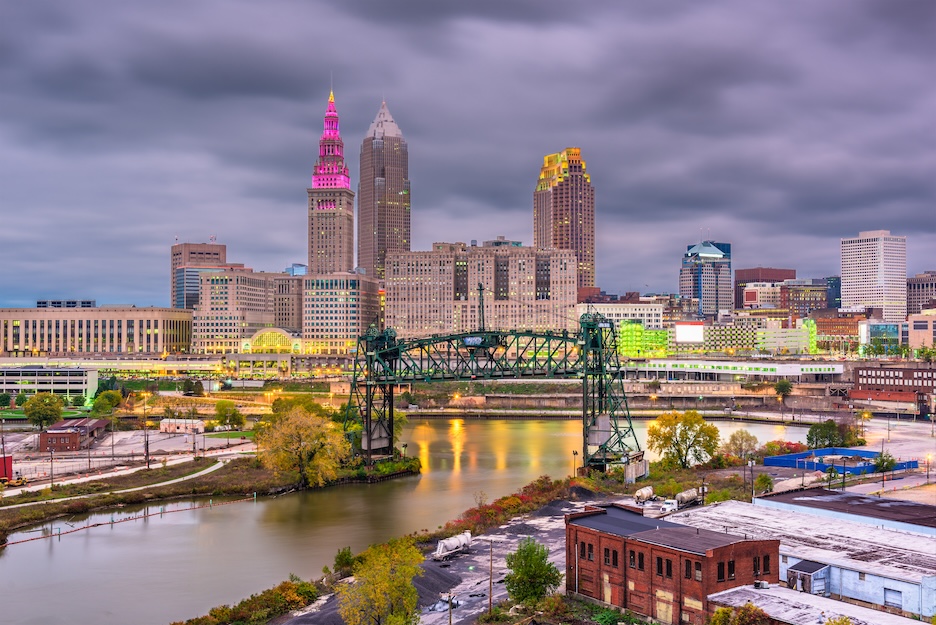Cleveland

Basic Information
-
Population (2023 estimate): 362,656
-
Educational Attainment: 82.5% of residents aged 25 and over have a high school diploma or higher; 22.5% hold a bachelor’s degree or higher
-
Housing Units: Approximately 203,319
-
Foreign-Born Residents: 6.9% of the population
-
Median Household Income: $39,041
-
Poverty Rate: 30.7% of residents live below the poverty line
-
Total Area: 77.7 square miles
-
Veteran Population: Approximately 11,155 residents
Cleveland’s Impact on American Sports
Cleveland CL-55
History of Cleveland
Cleveland, Ohio, was founded in 1796 by General Moses Cleaveland of the Connecticut Land Company at the mouth of the Cuyahoga River, where it flows into Lake Erie. The city’s location quickly made it a vital port and gateway to the American West. With the opening of the Ohio and Erie Canal in 1832, Cleveland became a major hub for shipping and commerce, connecting the Great Lakes to the Ohio River and the Gulf of Mexico. The arrival of the railroad further spurred its growth, and by the mid-19th century, Cleveland had emerged as a thriving industrial center, known for steel, oil refining, and manufacturing. The city attracted waves of immigrants from Eastern and Southern Europe, shaping its diverse cultural and labor landscape.
In the early 20th century, Cleveland was among the largest and wealthiest cities in the United States, home to industrial titans like John D. Rockefeller, whose Standard Oil empire began there. The city was also a leader in progressive urban planning, with landmarks such as the Mall Plan and an early adoption of public transportation. However, deindustrialization after World War II led to economic decline, population loss, and social unrest, culminating in events like the Cuyahoga River fire of 1969, which symbolized environmental degradation but also helped spark the modern environmental movement. In recent decades, Cleveland has experienced revitalization through healthcare (notably the Cleveland Clinic), education, sports, and the arts, while still confronting challenges tied to its industrial past.
 >
>